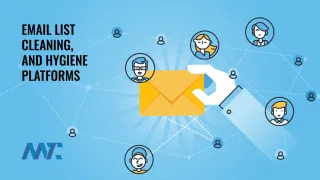We were discussing the state of the email list cleansing industry with the founder of an email cleansing platform. If you go to that link, you’ll find many players in the market—many of which we’ve tested and used for our clients. We struck up a relationship because their system did an extraordinary job verifying our newsletter and clients’ lists.
There are some huge differentiators between the market players, but at the very foundation of the tools is the simple question of whether they are an email validation tool or an email verification tool. There’s a huge difference between the two.
Let’s first look at the journey of an email address. The first issue is simply accepting the construction of the email address. Email length and construction are important. That’s validation. A valid email will be sent but not necessarily received by the recipient’s server for a number of reasons. The emails may be accepted or bounced (returned).
Verification is an essential maintenance step for any large email sender. Most large email senders integrate validation directly into their landing forms and intake processes. Most email service providers will send to every email address on your list, whether or not it’s bad. Then, they will change the subscriber’s status based on the bounce code received.
An Email Service Provider’s deliverability means that the recipient server received the email. If it bounces, they may even send it repeatedly, depending on the bounce code. Sending many emails to email addresses that bounce email addresses can severely impact your overall email deliverability. Poor lists can drive most of your emails to the junk folder rather than the inbox – even when the recipient is valid.
What is Email Validation?
Punctuation is critical – believe it or not, it’s more than just an @ symbol and a domain with a period in it. Email addresses can have all of the following symbols in the name (before the @):
a-z, A-Z, 0-9, !, #, $, %, &, ', *, +, -, /, =, ?, ^, _, `, ", {, }, |, ~ (without the commas)
After the @, there’s a period expected… just not at the beginning or the end. Some email validation services will also check to see if a mail record exists for the domain. This is a simple check just to see whether or not the email address can be routed but has nothing to do with the recipient other than the domain that’s being sent to.
What is Email Verification?
Email verification is the most complex part of email cleansing. Email verification is the process of verifying the recipient account mailbox exists, is active, and accepts mail. This requires much more work, including algorithmic, programmatic, and historical databases that emails can be checked against.
Sophisticated platforms like Neverbounce verify and return a status with each email recipient’s address:
- Whether or not the email address is valid – the account exists, is active, and accepts email.
- Whether or not the email address is invalid – the account does not exist, or is inactive, and will not accept email.
- Whether or not the email address is duplicate – a duplicate email address uploaded within the same list.
- Whether or not the email address is a catch-all address. A catch-all address is commonly used in small businesses to ensure a company receives an email sent to them, regardless of typos. It is often valid but may not always be safe.
- Whether or not the email address is unknown, where the service can’t definitively determine this email’s status. This email appears OK; however, the domain or server is not responding to the verification requests. This may be due to an issue with their internal network or expired domain names.
NeverBounce processes emails dynamically and in real-time, ensuring the validation is up-to-date and accurate. This means they connect to the server of the email in question every time a request is made. Other major validation firms cut costs by using stale and outdated data to check emails, which greatly jeopardizes the quality of your results.
